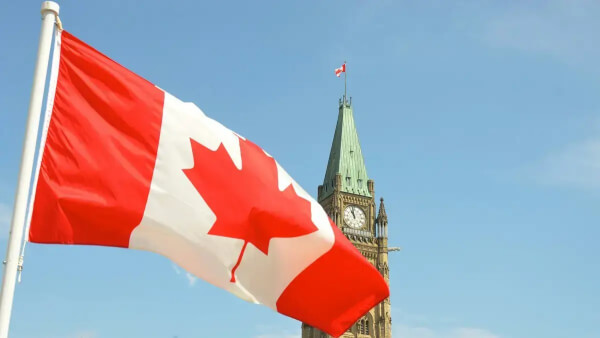Operating Profit Margin: Definition, Formula and Calculation
Check out our guide to understand operating profit margin and how to calculate it. Also learn how it can be used to show the health of your business.

The Unique Taxpayer Reference (UTR) is a UK tax identification number, issued by the HMRC to identify a person or business entity, this identification number is needed when one wishes to complete a tax self assessment.
If you’re self-employed, a sole trader, or you own a limited company, you’ll need to know about the UTR. In this guide, we’ll give you the full lowdown on the UTR, including what it looks like and how to find yours. Plus, what to do if you lose your UTR. So let’s get started.
⚠️ Note that in the UK, the abbreviation UTR usually refers to your tax ID - but in India, UTR stands for unique transaction reference.
First and foremost, you’ll need to know what a UTR looks like. It’s a 10 digit number just like the example below:
| UTR number: 7210158404 |
|---|
Some UTR numbers will have the letter ‘K’ at the end.
If you’re a visitor or expat from the US, it’s easy to confuse the UTR with a tax identification number (TIN).
The TIN is used by the Internal Revenue Service (IRS) in the US in its tax system, and can refer to a person’s Social Security Number (SSN) or Employer Identification Number (EIN).
Here in the UK, the UTR serves a similar function. But while it may be known as a ‘tax reference’ on some documentation, the official name for it is always the unique taxpayer reference (UTR).
Anyone who completes a tax self assessment will need a UTR to file their tax return. This applies if you’re self-employed or a sole trader, own your own registered company in the UK, or work with a business partner.
If you’re not sure whether or not you need to submit a self assessment, you can find out on the Government website.
A UTR may be automatically issued if you register a limited company or apply for tax self assessment. You’ll receive it in the post around 10 days after registering.¹
You’ll find your 10 digit number on correspondence from HMRC, often on the top right of letters issued regarding your UK tax. You can find it on:²
- Your personal tax account,
- The HMRC app,
- Previous tax returns,
- Notices from HMRC to file a return or payment reminders.
Ready to complete your first tax return? Here’s how the process of getting a UTR number looks like in two scenarios: if you are self employed or a partner in a limited company:
A sole trader or self-employed must register within HMRC for self assessment if they earned more than 1,000 GBP before tax relief in the last tax year (between April 6 and April 5 of the following year). Here is how to register for utr number:
If it's your first time registering
If you can't use the online service
⚠️ You need to register before October 5 of your business' second tax year, you could face a fine if that is not done.
You can request a copy of your company UTR number through the HMRC online services.
To do so your company needs to be registered within the Companies House, and you'll need to provide:
If you’ve checked all previous correspondence from HMRC, and haven’t been able to access online HMRC services, you may need to request a lost UTR.
The good news is that it should be relatively straightforward to do this. All you’ll need to do is call the Self Assessment helpline on 0300 200 3310 and provide your details, including your National Insurance number.
If you’re looking into getting a UTR, it’s likely that you’re setting up a new business or starting out as a freelancer. If you have plans to trade internationally with your new venture, you’re going to need a Wise Business multi-currency account.
With Wise Business you can receive money from clients overseas in 9 major currencies, and pay partners or employees sending and converting money for tiny fees and the real, mid-market exchange rate.
You can even integrate your Wise Business account with your accounting software, to save you on admin time. It’s international banking without the bank, and without the high fees.
And that’s the UTR in a nutshell. After reading this guide, you should be all clued up on what the unique taxpayer reference is, who needs one and where to find yours - including how to register if you’re ready to file your first tax return.
Once you have a UTR, it’s yours for life. But don’t worry if you lose it - just scroll back up to the handy section in our guide for recovering your UTR.
Sources used for this article:
Sources last checked on June 21, 2023.
*Please see terms of use and product availability for your region or visit Wise fees and pricing for the most up to date pricing and fee information.
This publication is provided for general information purposes and does not constitute legal, tax or other professional advice from Wise Payments Limited or its subsidiaries and its affiliates, and it is not intended as a substitute for obtaining advice from a financial advisor or any other professional.
We make no representations, warranties or guarantees, whether expressed or implied, that the content in the publication is accurate, complete or up to date.

Check out our guide to understand operating profit margin and how to calculate it. Also learn how it can be used to show the health of your business.

‘Wise Platform’ has hit the ground running in 2024, entering the year with a total of over 85 partners globally and a number of exciting announcements. Over...

Check out our guide on Canada tax codes. Get to grips with tax codes by province, federal income tax rates in Canada to help with international employees.

Looking to scale your business in Scotland? Check out this guide to business grants in Scotland from start up funding to government business grants and more.

Seeking funding for your business? This guide signposts what grants are available for small businesses in the UK and tips to help ensure application success.

Looking to scale with a business grant? This guide outlines opportunities for business grants in Wales - from start up funding to Welsh government grants.